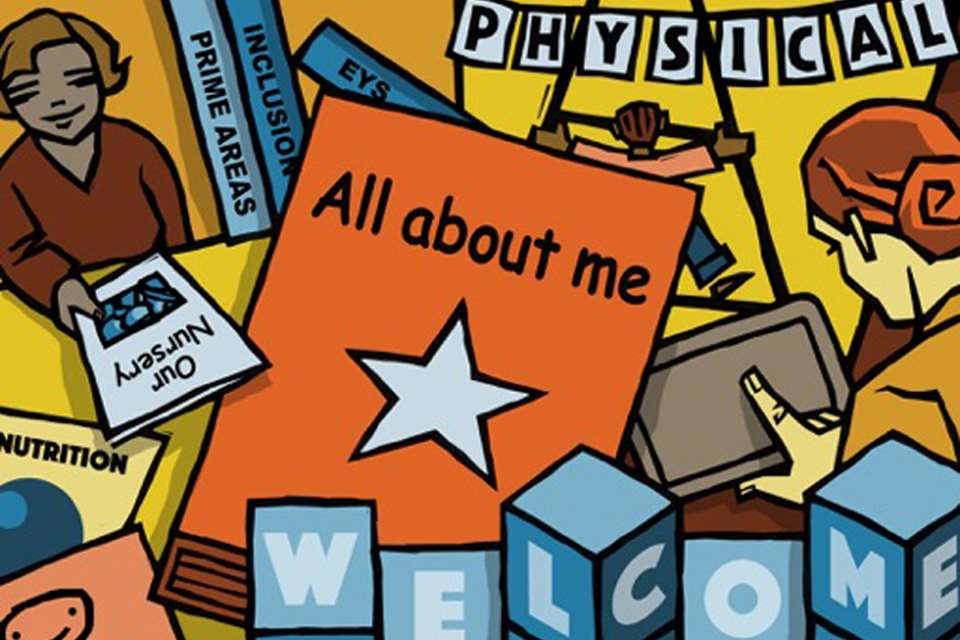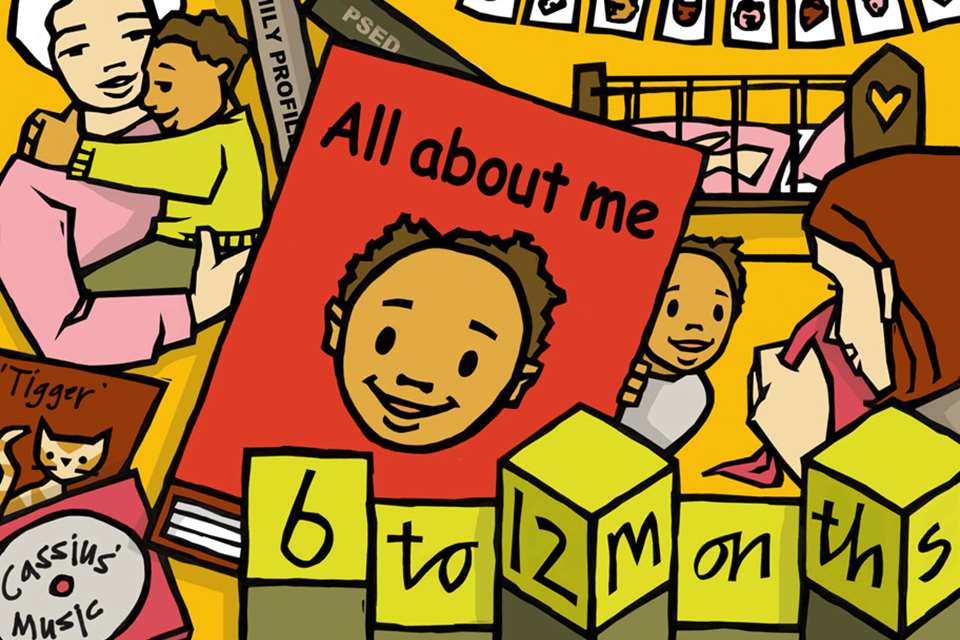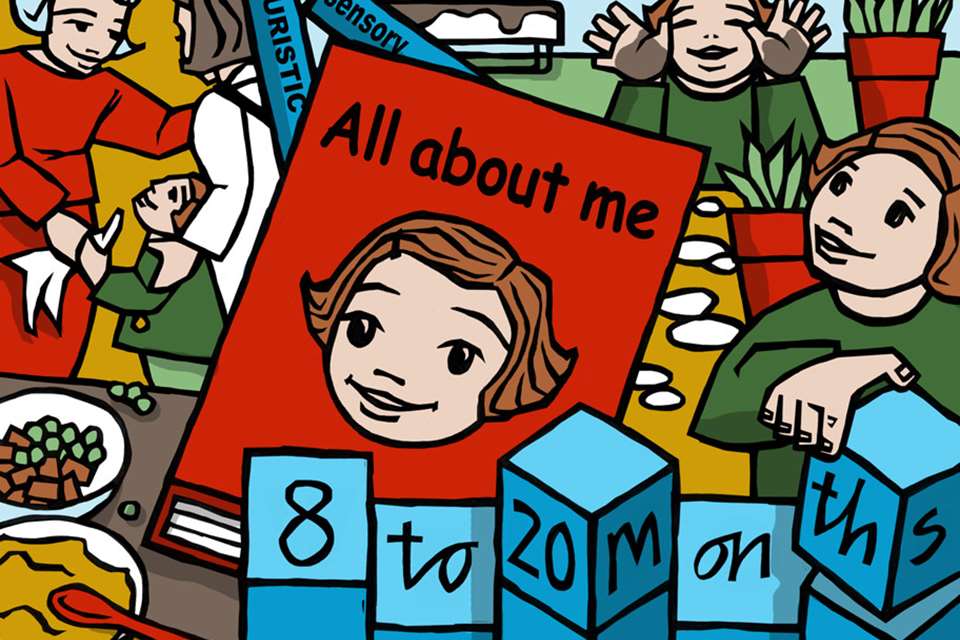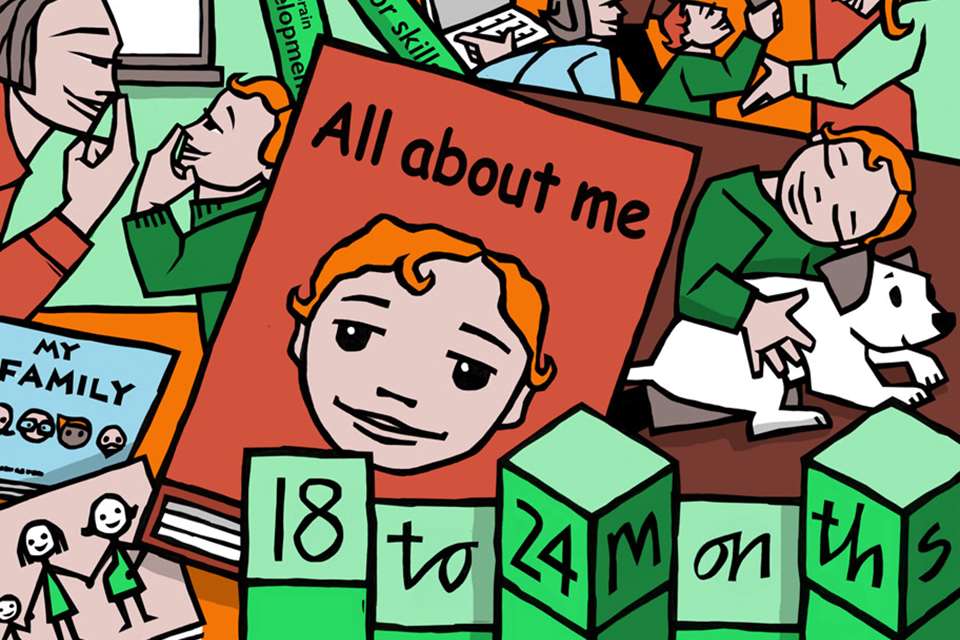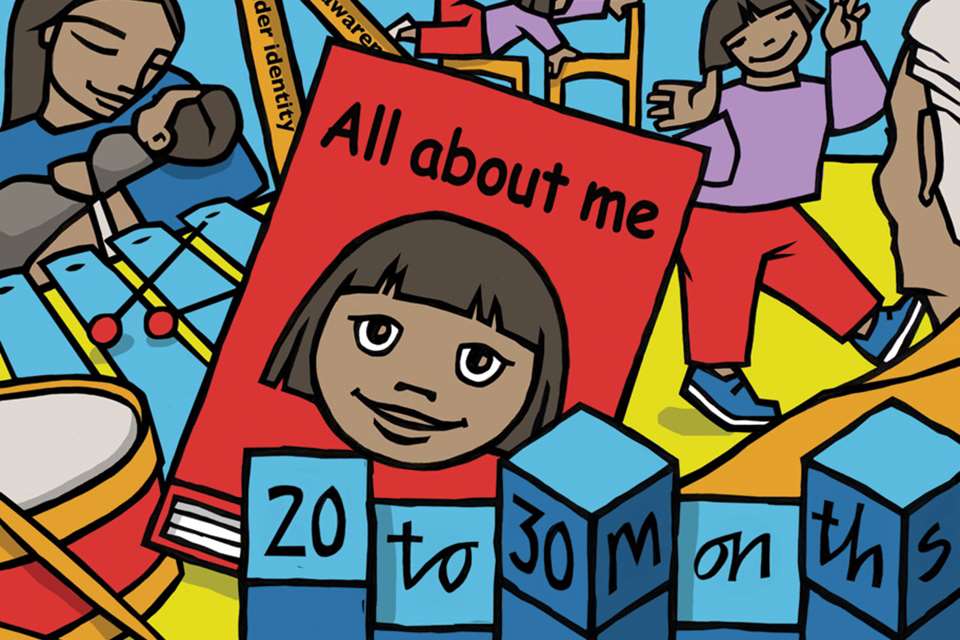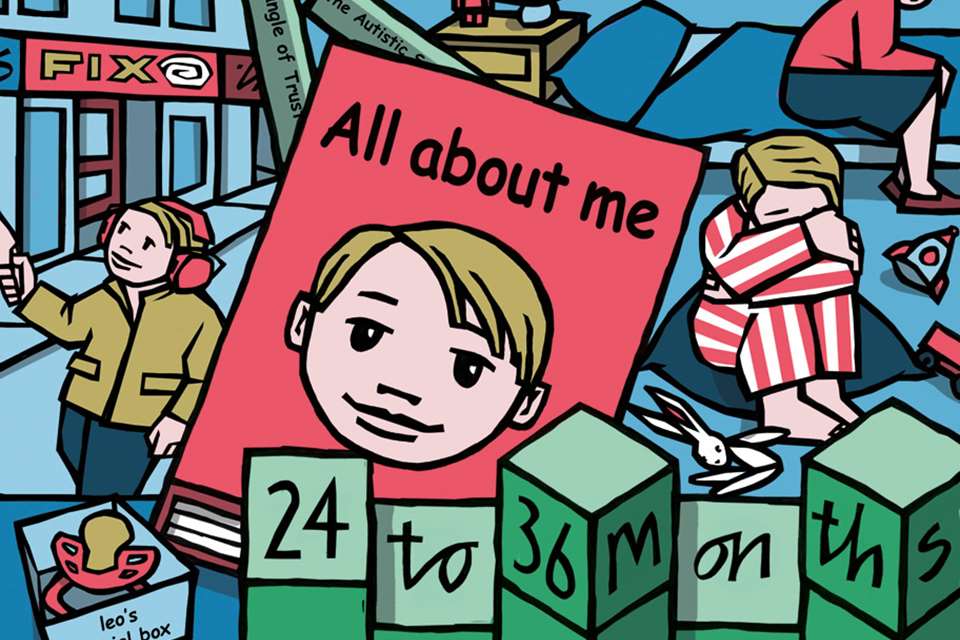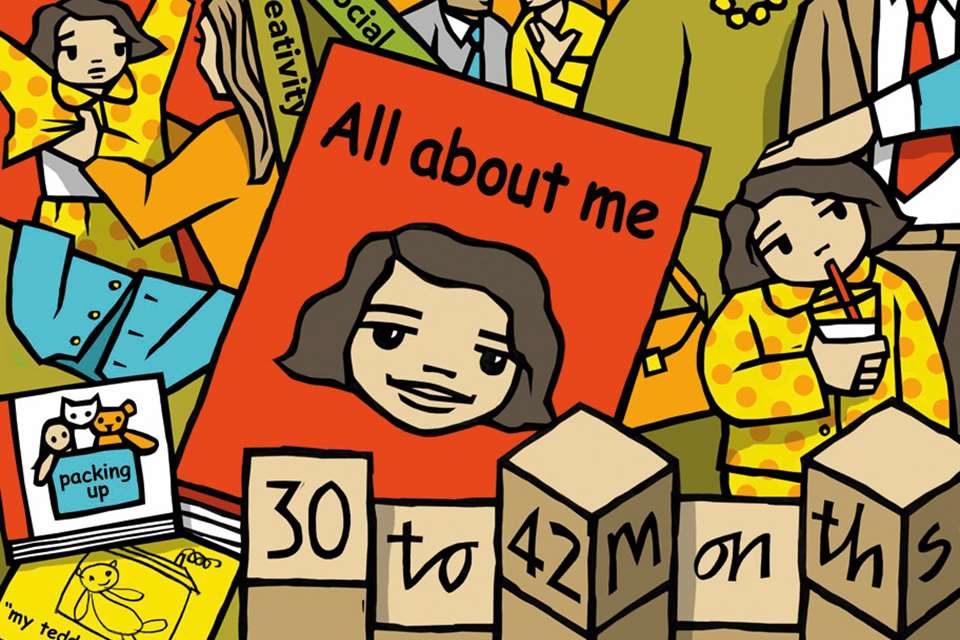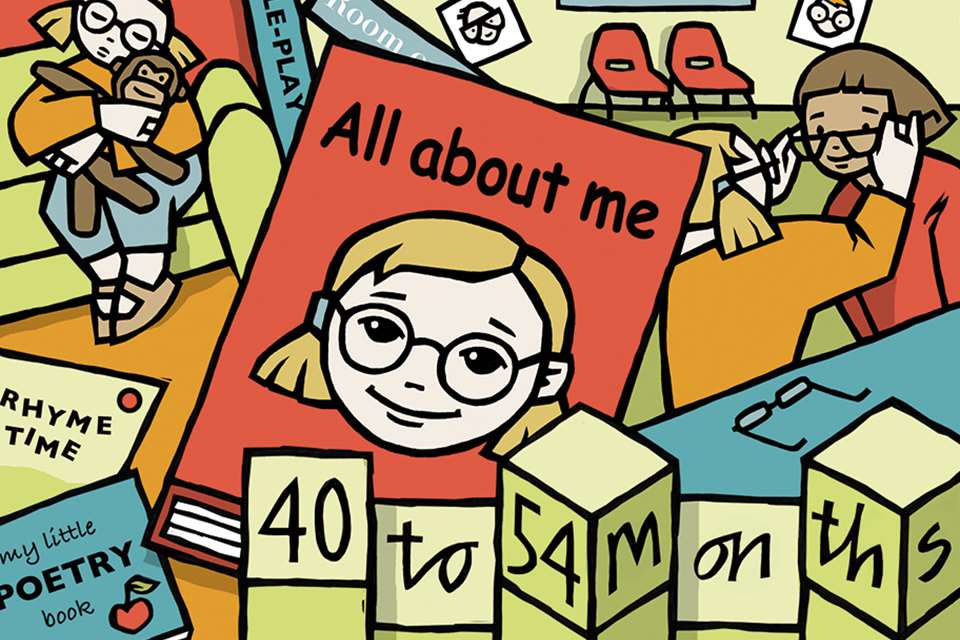STARTING POINTS: PART 10 - Riley, 56 months old
Julia Manning-Morton
Tuesday, October 4, 2016
Meeting the emotional and learning needs of the unique child

By Julia Manning-Morton, an independent consultant, trainer and author (www.key-times.co.uk/profiles/). She specialises in practice and provision that meets the needs of children under three and is an expert on the personal, social and emotional well-being of children and practitioners.
Her publications include Two-Year-Olds In Early Years Settings: Journeys Of Discovery (2015)
and Exploring Well-being in the Early Years (2014)
WORKING IN PARTNERSHIP: BUILDING TRUST WITH PARENTS
The team at Brendan’s nursery school, St Mary’s, reviewed their intake of children two years ago, with a focus on so-called ‘hard-to-reach’ families. Following training, staff had come to question why their service was not being used by the local families of Gypsy, Roma and Traveller heritage.
They learned from the local Traveller Education Support Service (TESS) team that the families often live or travel in small, well-established, extended family groups and that usually parents prefer not to send their children to nursery or school before they reach statutory school age. They also discovered that the TESS team had set up an outreach programme at a local Traveller site, providing some health services in partnership with the community health team.
Inspired by this work, and in recognition that children from these backgrounds are often disadvantaged in the education system, St Mary’s secured funding for an outreach worker to work alongside the TESS team, providing play sessions and a toy library on the site.
When the school’s outreach worker Bethan started to work at the site, she rarely saw Riley’s father, Brendan, as he was working, so she made a particular effort to do a home visit at a time when he would be available. During their discussion, Bethan suggested that attending nursery school would not only benefit Riley but would also relieve Teresa.
Brendan was initially reluctant to agree to this. In his view, early childcare is the responsibility of the family and he was worried that the community would think it inappropriate. He also worried about whether Riley would be safe being looked after by people outside the community.
Bethan understood that these were real concerns for Brendan, so offered the alternative of additional play sessions in the trailer. However, Brendan soon realised that the sessions wouldn’t help Teresa, so he agreed to Riley starting nursery school. The trusting relationship Bethan had built up with the family gave Brendan confidence in the nursery school staff being able to care well for Riley.
PERSONAL, SOCIAL AND EMOTIONAL DEVELOPMENT
For Riley, starting at the nursery school was the first time he had spent time with adults who were not family members and other children who were not Travellers. But his home experience of being part of a group of children, along with his friendly and interested disposition, helped him to adapt to the nursery environment.
The links that the nursery had built up with his family, along with the transition training that Riley’s key person, Tamsyn, had undertaken, provided a firm foundation on which to build the settling-in process.
At first, there were aspects of the nursery routine that Riley found difficult, such as having to stop playing and come inside for ‘circle time’. Tamsyn noticed how Riley’s behaviour deteriorated when he was indoors for any length of time, so she planned for as much of the routines, such as snack and circle times, to be outside as possible and also engaged Riley in negotiation when he did need to be inside.
She noticed how well he was able to come to a compromise when he was involved in decision-making. She also noticed that he often became the ‘mediator’, helping other children to resolve minor arguments. This, she thought, showed his developing Theory of Mind – that is, his ability to empathise and understand that other people may have beliefs, intentions and perspectives that are different from his own.
However, a less desirable behaviour that demonstrated Riley’s social skills was teasing. This he sometimes did in a light-hearted way, when he was joking, and sometimes when he was cross with another child. Occasionally, the teasing tipped over into hurting another child’s feelings, but Tamsyn saw how quickly he was prepared to ‘make up’ when she discussed it with him. She also understood that this behaviour showed his good social understanding and was part of building his developing social skills.
48-60 months: key aspects of personal, social and emotional development
Usually at this age, children:
- take steps to resolve conflicts with other children
- begin to be able to negotiate and solve problems without aggression
- are confident to speak to others about their own needs, wants, interests and opinions
- listen and respond to ideas expressed by others in conversation or discussion
- understand that their actions affect other people
- become aware of the boundaries and behavioural expectations in the early
- years setting
- respond to instructions involving a two-part sequence
- understand humour and enjoy nonsense rhymes and jokes
COMMUNICATION, LANGUAGE AND EARLY LITERACY
Riley’s ability to negotiate with the adults and children at nursery, and even his ability to tease, is built on his well-developed communication and language skills. His grandmother Teresa told Tamsyn that this was surprising, given how late he had started to talk. She was pleased how much he talked now he was at nursery.
Mostly, Riley was able to make himself understood. However, there were occasions – particularly at the outset – when Tamsyn did not understand certain words or phrases that Riley used. She recognised that she wasn’t familiar with Riley’s other language and dialect and immediately gathered from Teresa, Brendan and Bethan key words and phrases that she could use with all the children.
Riley’s language skills also contributed to his enjoyment of acting out stories and Tamsyn noticed how in these play scenarios, he would say things like ‘No, we start like this’ and ‘That’s the end now’, ‘I’m Ben 10 because he’s the best one’. These observations showed Tamsyn that Riley did have an interest in and understanding of stories even though he was reluctant to sit in the book area at storytime.
48-60 months: key aspects of language development and early literacy
Usually at this age, children:
- listen to and join in with stories and poems, one-to-one and in small groups
- begin to be aware of the way stories are structured; their settings, events and principal characters
- look at books independently and handle them carefully
- know that print carries meaning and, in English, is read from left to right and top to bottom
- use talk to connect ideas, explain what is happening and anticipate what might happen next, recall and relive past experiences
- question why things happen and give explanations
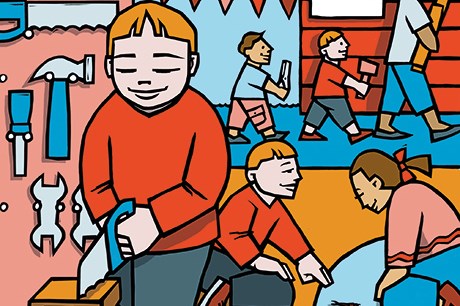
MOVING, DOING AND MAKING
Riley’s preference at nursery is to be outside playing in the mud kitchen, at the woodwork bench or building with the blocks. He is very adept at manipulating materials and tools, particularly at the woodwork bench.
One strategy that Tamsyn tried to make Riley more engaged in activities inside was to develop a ‘shed’ play area. But Riley was scornful of the pretend plastic tools and disregarded the area completely! Riley’s home experience of helping his Dad mend things meant that he was used to handling real tools in a safe and effective way.
Tamsyn tried to show him how to use the vice but stepped back to allow him autonomy when she saw that he clearly knew what to do. She noted in his profile book that he has a very good knowledge of the tools, what they are used for and how to handle them safely. These skills mean that he is now in charge of putting the tools in their correct places at the end of the session.
For most children of this age, tasks that entail precise control of hand muscles can often lead to failure and frustration because they cannot yet make full circular wrist actions. This means that the actions that are used in cursive writing or using a screwdriver, for example, only become more possible in the fifth year of life, as the wrist has cartilage that will not harden into bone until about six years old.
For Riley, his previous practice at using a screwdriver means that he is more adept than most at this. However, if Tamsyn had confined her assessment of his dexterity to his use of a pencil, she would have missed this ability because Riley shows little inclination to draw or write.
48-60 months: key aspects of fine motor physical development
Usually at this age, children:
- show increasing control over an object; pushing, patting, throwing, catching or kicking it
- hold a pencil between thumb and two fingers, no longer using whole-hand grasp
- can copy some letters – that is, letters from their name
- handle tools, objects, construction and malleable materials with increasing control
- understand that equipment and tools have to be used, transported and stored safely
THEORY: EPISTEMIC AND LUDIC PLAY
Hutt et al (1989) describe three categories of play: epistemic play, ludic play and games with rules.
Epistemic play: When children play with a new object, they first explore what it is like and what it does. In this way, they gain knowledge about the object and how it works and use problem-solving type thinking in their explorations.
Ludic play: Once children have found out about the object, they then use what they have learned in their imaginative play. So, the main questions of ‘What is it?’ and ‘What does it do?’ become ‘What could I do with it?’ and ‘What could it be?’ This kind of play involves imaginative, creative thinking, fantasy and entertainment.
Playing and thinking
Riley, like a lot of Traveller children, is used to outdoor play. He is very familiar with the natural world and enjoys the nursery’s Forest School sessions. As with the woodwork bench, these sessions are a prime opportunity for Riley to demonstrate his knowledge, skills and abilities.
He notices and talks about the insects and features of the environment that he sees. He told Lara, ‘That’s not a spider, it’s an earwig – look it’s got claws.’ When he uses words unfamiliar to the Forest School leader, she checks his understanding of them and relays them to Tamsyn. If relevant to all the children in the group, Tamsyn then incorporates these words in her displays.
Riley is also used to being included in adult tasks, so nursery play activities associated with the adult’s work are particularly meaningful to him. He is often happier working alongside Tamsyn, wiping the tables or getting the bikes out of the shed than just following instructions and doing tasks on his own. One day when tidying up with his friend Charlie and Tamsyn, the following conversation developed:
Tamsyn: ‘Can you put all the vehicles in this box, please? We need to wash the mud off them.’
Riley: (holding a toy motor bike) ‘Is this a vehicle?’
Tamsyn: ‘Yes, it’s a motor bike, but it’s different to the cars, isn’t it? And they are vehicles too. Can you think why?’
Charlie: ‘But they’ve got wheels.’
Riley: ‘And they go on
the road.’
Tamsyn: ‘Yes. They both have wheels and go on the road, what about the aeroplane though? That goes in the air but it’s still a vehicle.’
Charlie: ‘It has wheels too.’
Riley: ‘And it goes vroom ‘cos it has an engine.’
Tamsyn: ‘Yes. Vehicles have wheels and engines and usually carry people and things to places, like your van and trailer, Riley.’
Riley: ‘That doesn’t have
an engine.’
Tamsyn: ‘No, but it has wheels, doesn’t it? It’s your home and a vehicle at the same time.’
Four-year-olds are often very interested in classification and increasingly, in number and quantity; they often like to measure, compare and sort things. However, they can still be confused at classifying objects according to more than one attribute. In this conversation, though, Tamsyn was able to effectively support Riley and Charlie in thinking about the different features and attributes of vehicles and also personalised the learning by including thinking about Riley’s home.
Riley’s growing ability to hold in mind several things at once is also apparent in his emerging understanding that things can be the same but look different. His extensive experience playing with mud and water has enabled him to think about how the same amount of water looks different in shallow or tall containers and how mud changes when in water but then sinks and settles into mud again. Piaget called this ‘conservation of thinking’. His experiments looked at how children develop conservation of shape, weight, volume, speed, number and moral development, usually from about six years of age.
Characteristics of Effective Learning
Children who are engaged in playing and exploring, creating and thinking usually:
comment and ask questions about aspects of their familiar world, such as the place where they live or the natural world
- can talk about some of the things that they have observed such as plants, animals, natural and found objects
- talk about why things happen and how things work
- develop an understanding
- of growth, decay and
- changes over time
- show care and concern for living things and the environment
- look closely at similarities, differences, patterns and change
- select and manipulate materials and tools to make and construct to achieve a planned effect
- begin to use mathematical language in relation to shape, number, size, weight and position
- begin to order items by length or height, weight or capacity
* St Mary’s Nursery School is fictional
Further reading
- Department for Children, Schools and Families (2009) Building Futures: Developing Trust
- A focus on provision for children from Gypsy, Roma and Traveller backgrounds in the Early Years Foundation Stage Nottingham: DCSF
- Dickins, M (2014) A–Z of Inclusion in Early Childhood. Maidenhead: OUP/McGraw Hill Education
- Hutt, JF, Tyler, S, Hutt, C and Christopherson, H (1989) Play, Exploration and Learning: A Natural History of Pre-School. London: Routledge
- Meggitt, C Bruce, T and Manning-Morton, J (2016) (6th Edition) Childcare and Education. London: Hodder Education
- Dowling, M (4th edition 2014) Young Children's Personal, Social and Emotional Development. London: Sage
- Moylett, H (Ed) (2014) Characteristics Of Effective Early Learning: Helping young children become learners for life. Maidenhead: Open University Press
- For our three-part series on the Characteristics of Effective Learning,
- visit: www.nurseryworld.co.uk/how-children-learn
- For other articles in our Starting Points series, visit: www.nurseryworld.co.uk


